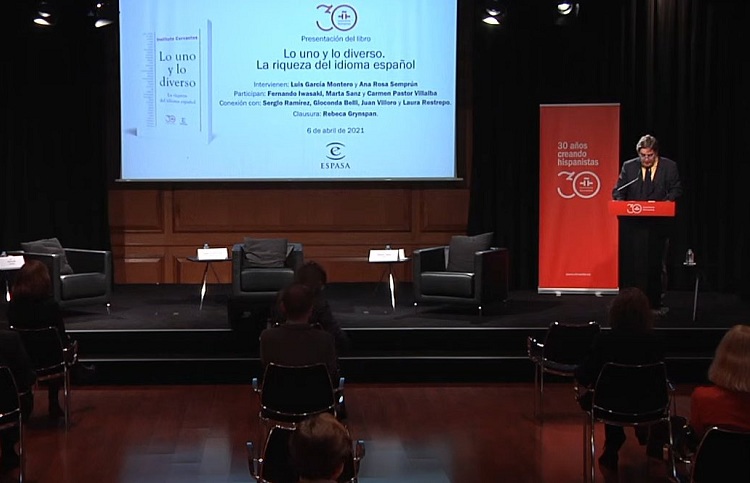The Diplomat
The Instituto Cervantes and the publishing house Espasa presented yesterdayLo uno y lo diverso. La riqueza del idioma español (The one and the diverse. The richness of the Spanish language), a book that deals with the variety of the Spanish language in the world in an informal and even humorous way.
The book brings together 21 articles by prominent writers in Spanish in which they humorously analyze the usual embarrassing situations created by words of unequal meaning and review the unity of a language that is “polycentric and plural” and is based on a complicity between “inclusive identities that do not subtract, but add”, according to the Ibero-American secretary general, Rebeca Grynspan, during the event, held at the Cervantes headquarters in Madrid.
“Unity is only maintained by respecting plurality and diversity”, said the director of the Instituto Cervantes, Luis García Montero, during the presentation. “Unity does not mean homologation, diversity is richness and helps us to flee from fundamentalism”, far from “invitations to sectarianism, hatred or racism”, added García Montero, who participates in the book with the article entitled En esta lengua nos contamos la vida (In this language we tell ourselves about life). According to the editorial director of Espasa, Ana Rosa Semprún, the book “is a jewel, it teaches by delighting, it is very amusing, it is a book you don’t let go of”, and, for this reason, it is going to be widely read because it is “very entertaining for all audiences, also for young people”.
This 224-page work is the result of an invitation from Cervantes to 21 authors from different Spanish-speaking countries to freely address some linguistic aspect related to the diversity of the language. After a prologue by the academic Fernando Álvarez de Miranda, the authors are María Antonieta Andión, María Teresa Andruetto, Gioconda Belli, Gonzalo Celorio, Luis García Montero, Mempo Giardinelli, Álex Grijelmo, Carla Guelfenbein, Carlos Herrera, Fernando Iwasaki, Rolando Kattan, Sergio Ramírez, Laura Restrepo, Carme Riera, Nancy Rozo, Daniel Samper, Marta Sanz, Maia Sherwood, Pablo Simonetti, Juan José Téllez and Juan Villoro.
During the meeting, one of the authors, the Spanish Marta Sanz, praised the hilarity produced by the misunderstandings caused by some expressions (such as “chupar pollas”) and the Peruvian Fernando Iwasaki (resident in Seville) recalled the different uses of terms such as “huevo” (to which he dedicated an article), “hortera”, “cacao” or “patata” and made mention of other almost abolished voices of remote African or indigenous origin that hide a past linked to slavery or ignored peoples.
During his intervention by videoconference, Nicaraguan Sergio Ramirez explained his contribution to this “collective adventure” through the word “cabanga” (melancholy, nostalgia), Gioconda Belli recalled “the wonderful selection of native Nicaraguan words” that went around the world with the song Son tus perjúmenes mujer, by Carlos Mejía Godoy, the Colombian Laura Restrepo said that Spanish speakers have “as many accents as skin tones” and the Mexican Juan Villoro affirmed that, despite the differences between the vocabulary of the different countries, Spanish speakers end up “understanding each other” because “the great enigma of this language is that we are condemned to understand each other”.






